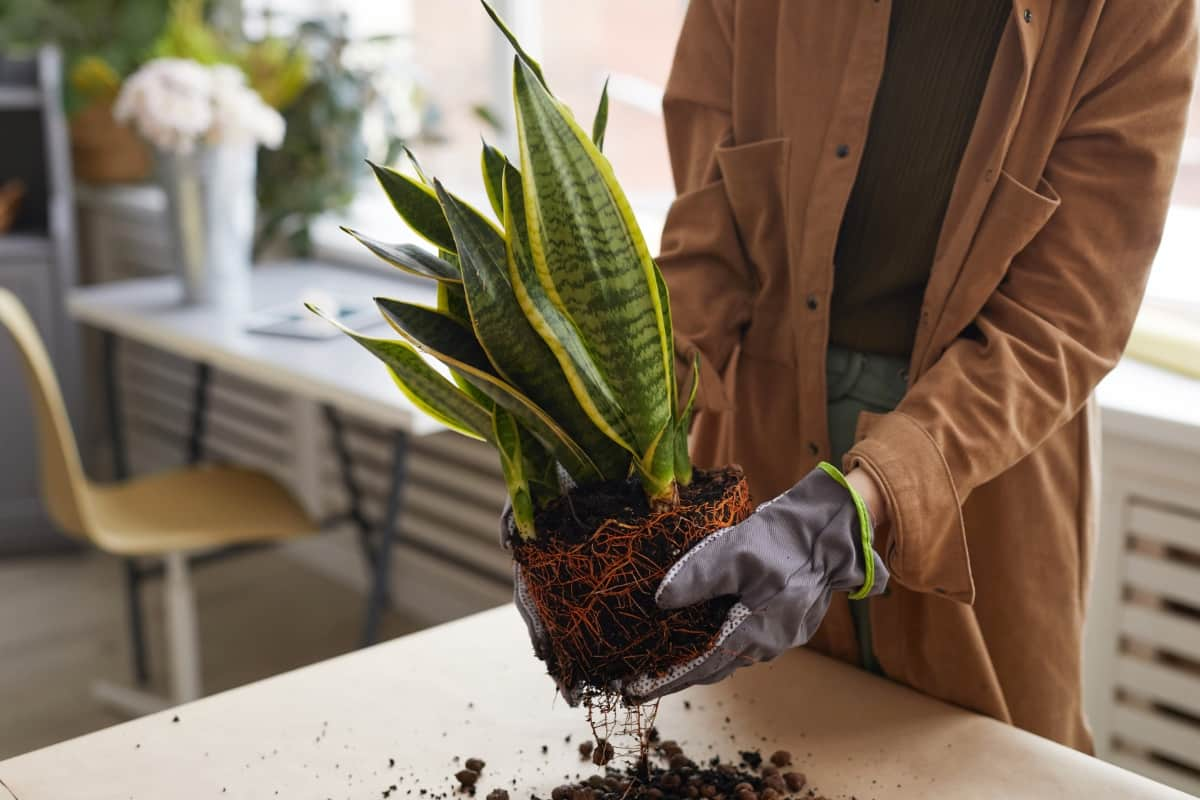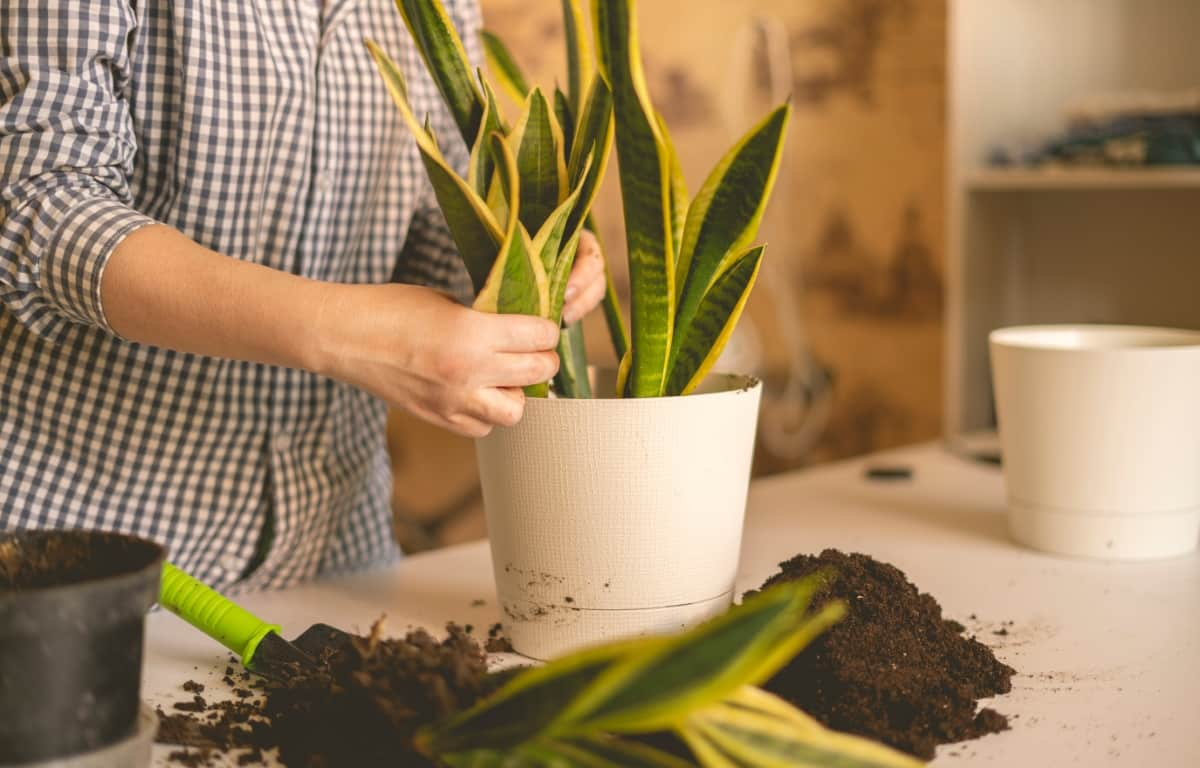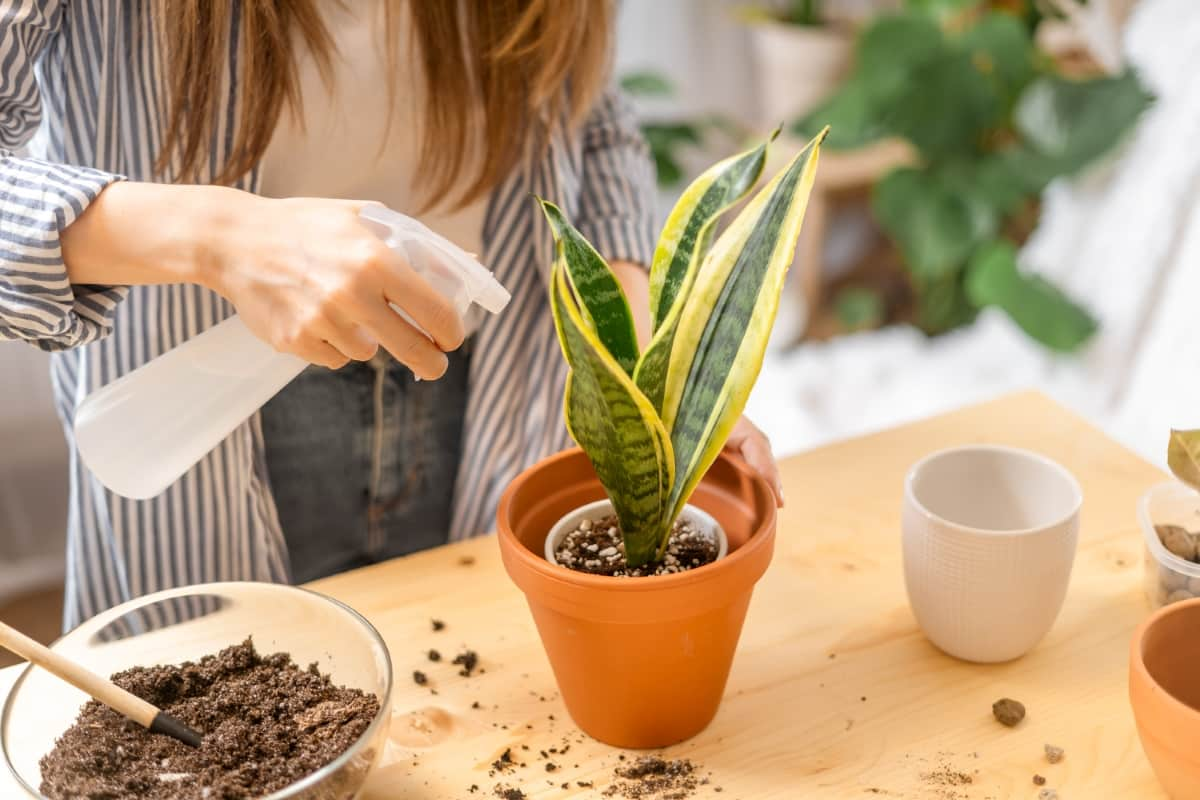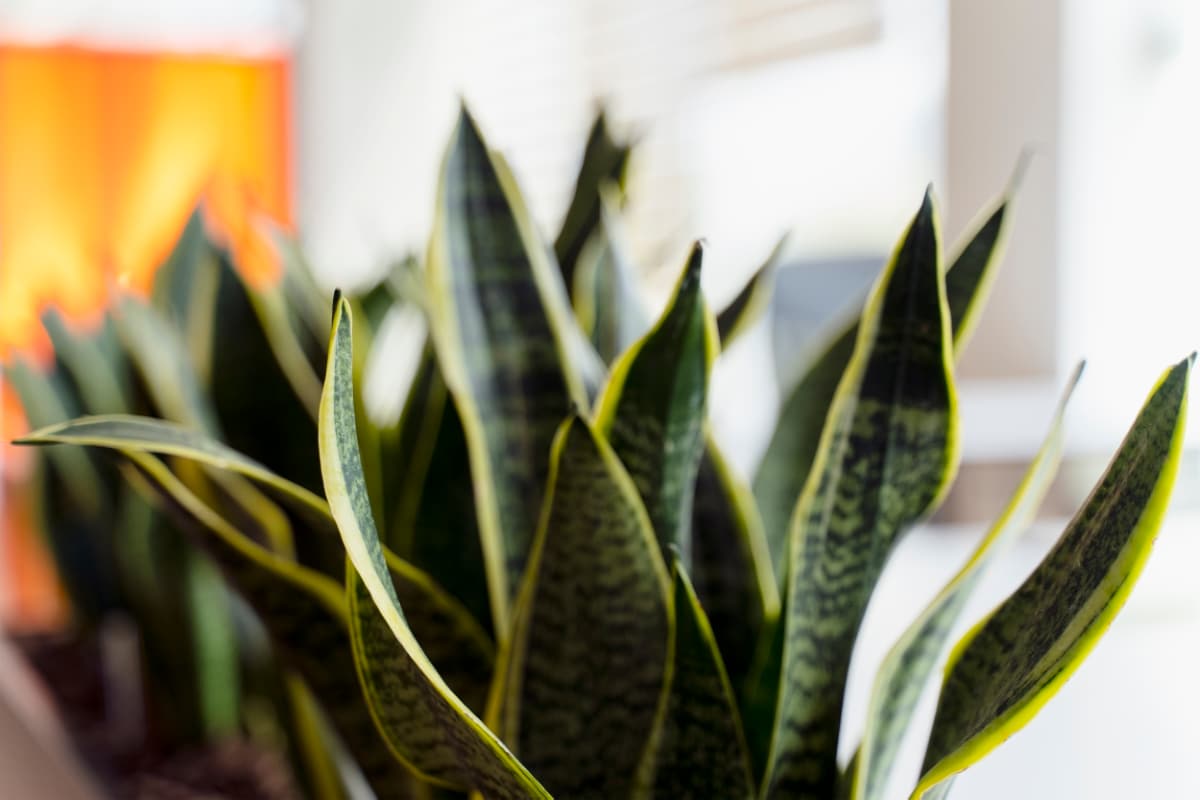Snake plants (Sansevieria spp.), also known as mother-in-law’s tongue, are popular houseplants known for their striking appearance and low-maintenance nature. However, like any plant, snake plants can face various issues that affect their health and beauty. In this blog, we will explore common problems that snake plants encounter and provide natural solutions to address them effectively.

Natural Ways to Fix Common Snake Plant Problems
Understanding Snake Plant Problems
Yellowing Leaves
- Cause: Overwatering, underwatering, or excessive direct sunlight.
- Solution: Adjust watering frequency, ensure proper drainage, and provide indirect sunlight or moderate shade.
Brown Tips and Edges
- Cause: Dry air, low humidity, or chemical exposure.
- Solution: Increase humidity levels, mist the leaves regularly, and avoid exposing the plant to chemicals.
Soft and Mushy Leaves
- Cause: Overwatering, poor drainage, or root rot.
- Solution: Allow the soil to dry before waterings, improve drainage, and address any root rot issues.
Curling Leaves
- Cause: Inconsistent watering, low humidity, or pests.
- Solution: Maintain a consistent watering schedule, increase humidity levels, and address any pest infestations.
Dry, Brittle Leaves
- Cause: Low humidity, underwatering, or exposure to cold drafts.
- Solution: Increase humidity levels, water the plant adequately, and keep it away from cold drafts.
Slow Growth or No Growth
- Cause: Lack of nutrients, inadequate light, or overcrowded roots.
- Solution: Fertilize regularly with a balanced houseplant fertilizer, provide sufficient light, and consider repotting if roots are congested.
Leaf Spotting
- Cause: Fungal or bacterial infections, overwatering, or high humidity.
- Solution: Improve air circulation, avoid overhead watering, and treat with organic fungicides or bactericides.
In case you missed it: How to Use Neem Oil on Snake Plants: Best Way to Get Rid of Bugs Naturally from Snake Plants

Splitting Leaves
- Cause: Overwatering, rapid temperature changes, or physical damage.
- Solution: Adjust watering practices, maintain consistent temperatures, and handle the plant with care.
Fading or Loss of Leaf Color
- Cause: Insufficient light or nutrient deficiency.
- Solution: Move the plant to a Sunny, brighter location, fertilize regularly with a balanced fertilizer, and ensure proper watering.
Leaf Shriveling
- Cause: Underwatering, low humidity, or root problems.
- Solution: Water the plant adequately, increase humidity levels, and check for any root issues.
Prevention and Maintenance
- Watering: Tips for proper watering: Allow the soil before between waterings, water thoroughly, and ensure proper drainage.
- Light Requirements: Ideal light conditions are bright, indirect sunlight to moderate shade. Avoid exposing the plant to Sunny, direct sunlight, which can scorch the leaves.
- Soil and Fertilization: Soil requirements: Well-draining potting mix with good aeration. Fertilize regularly with a balanced houseplant fertilizer according to the package instructions.
- Humidity: The optimal humidity level is 40-50%. You can increase humidity by using a humidifier, placing a tray near water, or regularly misting the leaves.
- Pruning and Propagation: Remove any yellow or diseased leaves promptly. Propagate snake plants by dividing the rhizomes and by rooting leaf cuttings, water, or soil.
Troubleshooting Additional Issues
Root Rot
- Cause: Overwatering or poor drainage.
- Solution: Allow the soil to dry before watering, improve drainage, and repot the plant if necessary.
Pests
- Common Pests: Spider mites, mealybugs, and scale insects.
- Solution: Use natural remedies like neem oil or insecticidal soap to control pests, and isolate the affected plant if necessary.
Drooping Leaves
- Cause: Underwatering, overwatering, or root problems.
- Solution: Adjust watering practices, check for root issues, and ensure proper drainage.
In case you missed it: Ultimate Guide to Managing Peacock Plant Pests and Diseases: Prevention and Treatment

Tips to Control Common Snake Plant Problems
- Maintain consistent watering practices and avoid overwatering.
- Provide adequate light, avoiding direct sunlight or deep shade.
- Increase humidity levels through various methods.
- Regularly inspect the plant for symptoms of pests or diseases.
- Use organic solutions for pest control.
Solutions to Common Snake Plant Problems
- Implement proper watering techniques and adjust the watering schedule as needed.
- Improve humidity levels through misting, using a humidifier, or place plant on a tray with water.
- Provide appropriate lighting conditions and avoid extreme temperature fluctuations.
- Use natural remedies or organic products to control pests and diseases.
- Ensure well-draining soil and proper pot size, and repot the plant if necessary.
In case you missed it: Using Sevin Dust on Flowering Plants: Guide for How and When to Apply

Conclusion
Snake plants are popular choices for indoor gardening due to their unique appearance and ability to thrive in various conditions. By understanding the common problems they may face and implementing natural solutions, you can help your snake plant flourish and maintain its beauty. Remember to provide the right conditions, monitor watering practices, address pest issues promptly, and follow proper maintenance techniques.
- Beneficial Insects in Pest Management
- Natural Solutions for Pest Control in Flower Gardens
- Types of Fungicides Used in Agriculture
- Common Issues in the Fruit Development Stage of Pomegranate Farming
- Fruit Development Issues in Papaya: Easy Solutions and Treatment
- Soil-Borne Diseases and How to Protect Your Plants
- Practices to Prevent Disease Spread in the Garden
- From Wilted to Thriving: How to Treat Root Rot Naturally in Houseplants
- Natural Remedies to Cure Brown Spots on Fig Tree Leaves